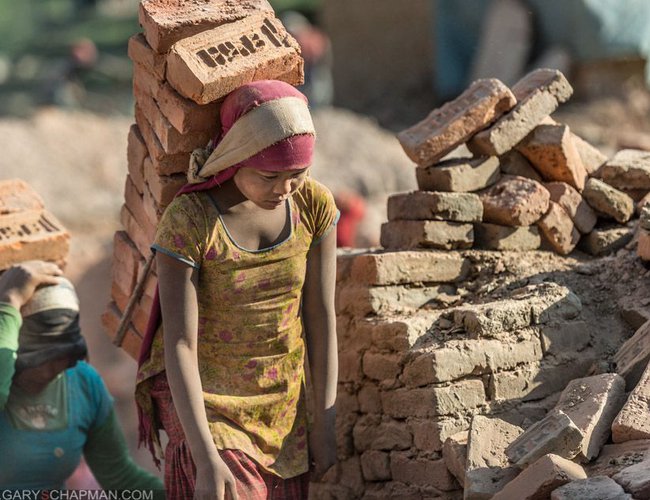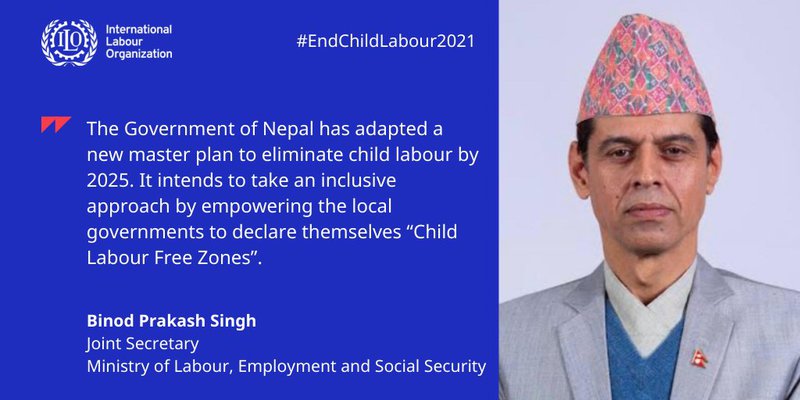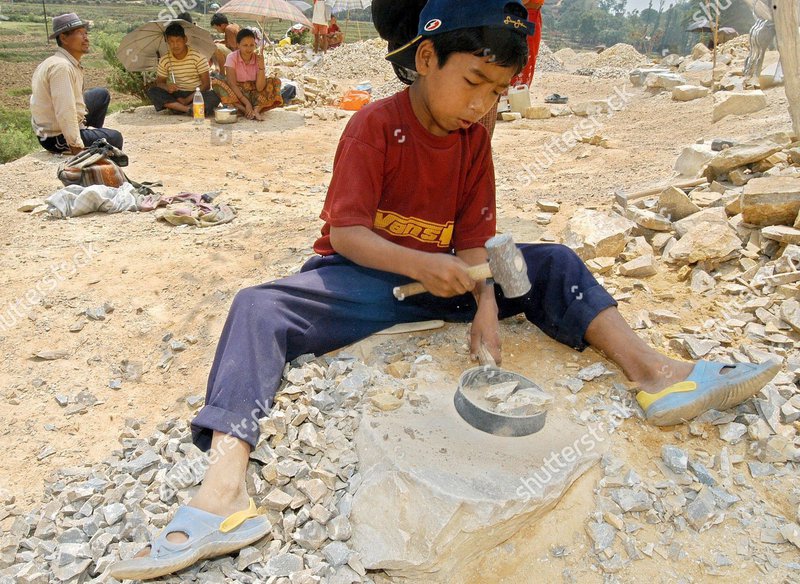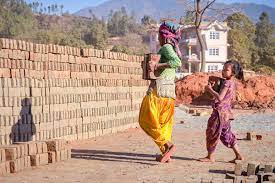
Although Nepal has made major progress successfully achieving the target to reduce child labor, the recent surge of Covid-19 has been pushing Nepal where it was before.
Given the growing economic burden in the households due to lack of employment and other activities, parents are forcing their children to go to work. Given the current state, Nepal Government has also introduced some policy level changes to contain child labor.
“The Government of Nepal has adopted a new master plan to eliminate. It intends to take an inclusive approach by empowering the local governments to declare themselves child labor free zones,” said Binod Prakash Singh, joint secretary of Ministry of Labour, Employment and Social Security.
The recent study conducted by ILO and Central Bureau of Statistics shows a declining trend of Child labor recently. However, the Covid-19 pandemic will likely reverse such progress. ILO and UNICEF warns that the pandemic context may threaten Nepal’s progress in eradicating child labor

In Nepal, the pandemic is also impacting the progress in eradicating child labor. Indeed, the Nepal Child Labour Report 2021, a joint publication of the ILO and Central Bureau of Statistics shows a declining trend of overall child labor in Nepal, reaching 1.1 million in2018 from 1.6 million in 2008. A significant decline is observed in the number of children in hazardous occupations (0.62 million in 2008 to 0.22 million in 2018).
This important progress made is now challenged by the socioeconomic realities of the COVID 19 pandemic. Children in child labor are at risk of physical and mental harm. Child labor compromises children’s education, restricting their rights and limiting their future opportunities, and leads to vicious inter-generational cycles of poverty and child labor.“Preventing child labor and protecting children from the associated risks of physical and mental harm, school drop-out and exploitation were already major challenges prior to COVID-19. As the new data shows, the severe socio-economic impact of the pandemic has hit families with children particularly hard. According to the rapid Child & Family Tracker survey carried out in late May, over 50per cent of families across Nepal have lost jobs and related livelihoods in the current context.” said Elke Wisch, UNICEF Representative in Nepal.
“Increased economic hardship combined with school closures caused by COVID-19 place children already in child labor at increased risk of working longer hours or under worsening conditions, while many more may be forced into the worst forms of child labor due to job and income losses among vulnerable families. Our collective success in combatting COVID-19 needs to also be measured in the number of families we are supporting through these dire circumstances and the girls and boys who can continue to strive, grow and develop. This is not out of reach – It can be achieved through our collective investment in programs that not only get children out of the workforce and back into school but also social work and social protection programs that can help families avoid making this choice in the first place.”
To reverse the upward trend in child labor, the ILO and UNICEF are calling for: Adequate social protection for all, including universal child benefits and eligibility criteria taking into account households socio-economic characteristics, increased spending on quality education and getting all children back into school - including children who were out of school before COVID-19, promotion of decent work for adults, so families don’t have to resort to children helping to generate family income., an end to harmful gender norms and discrimination that influence child labor and investment in child protection systems, social work, agricultural development, rural public services, infrastructure and livelihoods.
As part of the International Year for the Elimination of Child Labour, the global partnership Alliance 8.7, of which UNICEF and ILO are partners, is encouraging member States, business, trade unions, civil society, and regional and international organizations to redouble their efforts in the global fight against child labor by making concrete action pledges.
Nepal is a pathfinder country of the Global Alliance 8.7 Alliance. This year, more than ever it is critical to expanding the path to opportunities, safety and care for all the children of Nepal.
The number of children in child labor has risen to 160 million worldwide – an increase of 8.4 million children in the last four years – with millions more at risk due to the impacts of COVID-19, according to a new report by the International Labour Organization (ILO) and UNICEF.
Child Labour: Global estimates 2020, trends and the road forward– released ahead of World Day Against Child Labour on 12th June – warns that progress to end child labor has stalled for the first time in 20 years, reversing the previous downward trend that saw child labor fall by 94 million between 2000 and 2016.
The report points to a significant rise in the number of children aged 5 to 11 years in child labor, who now account for just over half of the total global figure. The number of children aged 5 to 17 years in hazardous work – defined as work that is likely to harm their health, physical safety and psychological wellbeing – has risen by 6.5 million to 79 million since 2016.

“These new estimates indicate that despite the increasing commitment and efforts by governments, the social partners and civil society to tackle child labor, the problem remains on a massive scale, said ILO Director for Country Office in Nepal Richard Howard. “This situation represents an intolerable violation of the rights of individual children, it perpetuates poverty and it compromises economic growth and equitable development. It is high time for all of us to join forces and implement programs to address vulnerabilities associated with child labor, including lack of social protection and decent work opportunities for families vulnerable to poverty and exclusion.”
The report warns that globally; 9 million additional children are at risk of being pushed into child labor by the end of 2022 as a result of the pandemic. A simulation model shows this number could rise to 46 million if they don’t have access to critical social protection coverage.
Even in regions where there has been some headway since 2016, such as Asia and the Pacific, and Latin America and the Caribbean, COVID-19 is endangering that progress.
In Nepal, the pandemic is also impacting the progress in eradicating child labor. Indeed, the Nepal Child Labour Report 2021, a joint publication of the ILO and Central Bureau of Statistics shows a declining trend of overall child labor in Nepal, reaching 1.1 million in2018 from 1.6 million in 2008. A significant decline is observed in the number of children in hazardous occupations (0.62 million in 2008 to 0.22 million in 2018).
This important progress made is now challenged by the socioeconomic realities of the COVID 19 pandemic. Children in child labor are at risk of physical and mental harm. Child labor compromises children’s education, restricting their rights and limiting their future opportunities, and leads to vicious inter-generational cycles of poverty and child labor.“Preventing child labor and protecting children from the associated risks of physical and mental harm, school drop-out and exploitation were already major challenges prior to COVID-19. As the new data shows, the severe socio-economic impact of the pandemic has hit families with children particularly hard. According to the rapid Child & Family Tracker survey carried out in late May, over 50per cent of families across Nepal have lost jobs and related livelihoods in the current context.” said Elke Wisch, UNICEF Representative in Nepal.
“Increased economic hardship combined with school closures caused by COVID-19 place children already in child labor at increased risk of working longer hours or under worsening conditions, while many more may be forced into the worst forms of child labor due to job and income losses among vulnerable families. Our collective success in combatting COVID-19 needs to also be measured in the number of families we are supporting through these dire circumstances and the girls and boys who can continue to strive, grow and develop. This is not out of reach – It can be achieved through our collective investment in programs that not only get children out of the workforce and back into school but also social work and social protection programs that can help families avoid making this choice in the first place.”
To reverse the upward trend in child labor, the ILO and UNICEF are calling for: Adequate social protection for all, including universal child benefits and eligibility criteria taking into account households socio-economic characteristics, increased spending on quality education and getting all children back into school - including children who were out of school before COVID-19, promotion of decent work for adults, so families don’t have to resort to children helping to generate family income., an end to harmful gender norms and discrimination that influence child labor and investment in child protection systems, social work, agricultural development, rural public services, infrastructure and livelihoods.
As part of the International Year for the Elimination of Child Labour, the global partnership Alliance 8.7, of which UNICEF and ILO are partners, is encouraging member States, business, trade unions, civil society, and regional and international organizations to redouble their efforts in the global fight against child labor by making concrete action pledges.
Nepal is a pathfinder country of the Global Alliance 8.7 Alliance. This year, more than ever it is critical to expanding the path to opportunities, safety and care for all the children of Nepal.
“The Government of Nepal has adopted a new master plan to eliminate. It intends to take an inclusive approach by empowering the local governments to declare themselves child labor free zones,” said Binod Prakash Singh, joint secretary of Ministry of Labour, Employment and Social Security.
Child labor has risen to 160 million worldwide – an increase of 8.4 million children in the last four years – with millions more at risk due to the impacts of Covid-19, according to a new report by the International Labour Organization (ILO) and Unicef.

"Child Labour: Global estimates 2020, trends and the road forward" – released ahead of World Day Against Child Labour – warns that progress to end child labor has stalled for the first time in 20 years, reversing the previous downward trend that saw child labor fall by 94 million between 2000 and 2016.
"We are losing ground in the fight against child labor, and the last year has not made that fight any easier. Now, well into the second year of global lockdowns, school closures, economic disruptions, and shrinking national budgets, families are forced to make heartbreaking choices," Unicef's executive director Henrietta Fore said in a statement.
World Day Against Child Labour is being observed on Saturday and the UN has made 2021 the International Year for the Elimination of Child Labour, calling urgent action needed to meet a goal of ending the practice by 2025.
Here's what the report on child labor said:
There has been a significant rise in the number of children aged 5 to 11 years in child labor, who now account for just over half of the total global figure.
The number of children aged 5 to 17 years in hazardous work has risen by 6.5 million to 79 million since 2016.
In sub-Saharan Africa, population growth, recurrent crises, extreme poverty, and inadequate social protection measures have led to an additional 16.6 million children in child labor over the past four years.
. Covid-19 is endangering that progress even in regions where there has been some headway since 2016, such as Asia and the Pacific, and Latin America and the Caribbean.
Globally, nine million additional children are at risk of being pushed into child labor by the end of 2022 as a result of the Covid-19 pandemic.
A simulation model shows this number could rise to 46 million if they don’t have access to critical social protection coverage.
Children already in child labor may be working longer hours or under worsening conditions because of additional economic shocks and school closures caused by Covid-19.
Many more may be forced into the worst forms of child labor due to job and income losses among vulnerable families.
The agriculture sector accounts for 70 percent of children in child labor (112 million) followed by 20 percent in services (31.4 million) and 10 percent in the industry (16.5 million).
Nearly 28 percent of children aged 5 to 11 years and 35 percent of children aged 12 to 14 years in child labor are out of school.
Child labor is more prevalent among boys than girls at every age. When household chores performed for 21 hours or more each week are taken into account, the gender gap in child labor narrows.
The prevalence of child labor in rural areas (14 percent) is close to three times higher than in urban areas (5 percent).
Child labor rises to 160 million – the first increase in two decades
The latest global estimates indicate that the number of children in child labor has risen to 160 million worldwide – an increase of 8.4 million children in the last four years. 63 million girls and 97 million boys were in child labor globally at the beginning of 2020, accounting for almost 1 in 10 of all children worldwide.
This report warns that global progress to end child labor has stalled for the first time in 20 years. The number of children aged 5 to 17 years in hazardous work – defined as work that is likely to harm their health, safety, or morals – has risen by 6.5 million to 79 million since 2016. In sub-Saharan Africa, population growth, extreme poverty, and inadequate social protection measures have led to an additional 16.6 million children in child labor over the past four years.
Additional economic shocks and school closures caused by COVID-19 mean that children already in child labor may be working longer hours or under worsening conditions, while many more may be forced into the worst forms of child labor due to the job and income losses among vulnerable families. The report warns that globally 9 million additional children are at risk of being pushed into child labor by the end of 2022 as a result of the pandemic.
Children in child labor are at risk of physical and mental harm. Child labor compromises children’s education, restricting their rights and limiting their future opportunities, and leads to vicious inter-generational cycles of poverty and child labor.
Key results from the 2020 global estimates include:
Involvement in child labor is higher for boys than girls of all ages. Among all boys, 11.2 percent are in child labor compared to 7.8 percent of all girls. In absolute numbers, boys in child labor outnumber girls by 34 million. When the definition of child labor expands to include household chores for 21 hours or more each week, the gender gap in prevalence among boys and girls aged 5 to 14 is reduced by almost half.
Child labor is much more common in rural areas. There are 122.7 million rural children in child labor compared to 37.3 million urban children. The prevalence of child labor in rural areas (13.9 percent) is close to three times higher than in urban areas (4.7 percent).
Most child labor – for boys and girls alike – continues to occur in agriculture. More than 70 percent of all children in child labor, 112 million children in total, are in agriculture.
The largest share of child labor takes place within families. 72 percent of all child labor and 83 percent of child labor among children aged 5 to 11 occurs within families, primarily on family farms or in family microenterprises.
Child labor is frequently associated with children being out of school. A large share of younger children in child labor is excluded from school despite falling within the age range for compulsory education. More than a quarter of children aged 5 to 11 and over a third of children aged 12 to 14 who are in child labor are out of school.
- MELAMCHI WATER SUPPLY: No Interruption During Monsoon
- Jun 25, 2025
- KOREAN RETURNEES: Successful Integration
- Jun 25, 2025
- UPPER TRISHULI-1: Engaging With Local
- Jun 25, 2025
- IME GROUP: Twenty Five Years Of Journey
- Jun 24, 2025
- NEPAL’S AIR POLLUTION: A Growing Health Concern
- Jun 24, 2025















